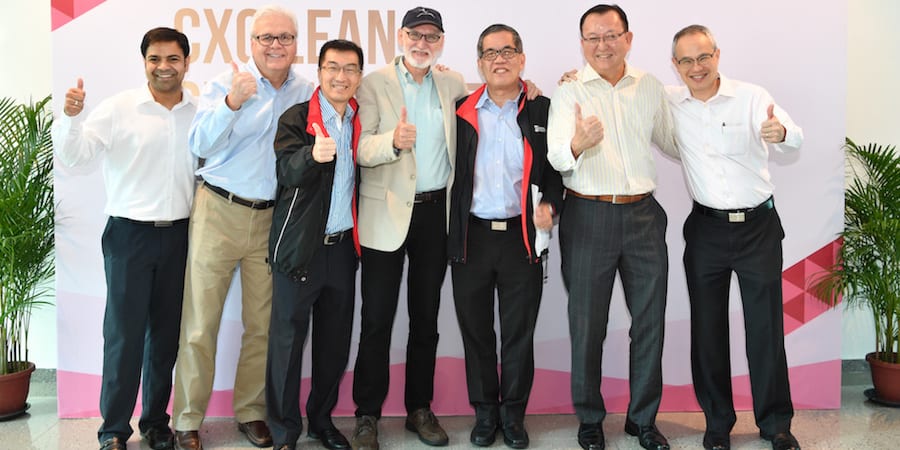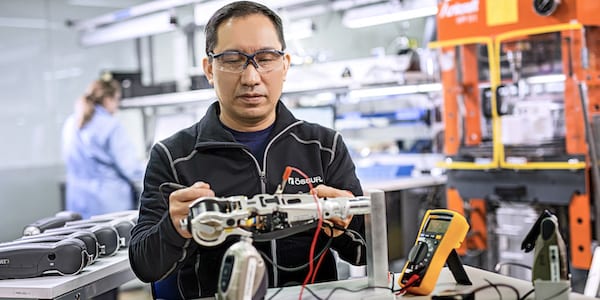
Michael Ballé on rewards and recognition in a lean company
FEATURE - The author addresses the ongoing debate on rewards and recognition, explaining how an optimal relationship between team members, team leaders and group leaders will influence motivation.
Words: Michael Ballé, lean author, executive coach and co-founder of Institut Lean France
Few can argue with the saying, first appeared in a 1999 article published on Gallup Business Journal, “People join companies but leave managers.” Indeed, people join organizations because they’re looking for a better job (or, considering the time we live in, simply for a job), lured by an appealing benefits package or by the firm’s reputation. But day after day the person they will have to deal with is their immediate manager or the person one rung above. The relationship with their two direct bosses will largely determine how productive – and satisfied – the employee will be.
On the gemba with Freddy Ballé, one of the pioneers of lean thinking, you will often hear him ask: “How are you organized?” Managers normally respond by telling about functional charts, value streams, and all sort of well thought organizational strategies. “How are your operators organized?” he then asks. “If I work here, what team am I part of? Who is my direct supervisor? What do they do for me?”
Motivation theory discussions on whether to reward people with compensation, a pat on the back, and so on, are deeply tainted by the Taylorist assumption that someone designs the system and operators have to somehow fit into it.
Since no one likes to be told what to do, companies need to come up with both hard (pay-for-performance) and soft (recognition and autonomy) rewards to keep people running after the ball.
But let’s work from the operator upwards.
First, a good size for a team is five to seven people – after seven, the team would split naturally into two four-people subgroups.
Any team should be led by a team leader, not a manager. Who wants to work with their manager on their back all day long? The team leader is an operator (co-worker) with the extra mission of leading the team in knowing all standards like the back of their hand and being able to cope with the various hitches that occur in a working day.
Four to five teams are led by a group leader, the first level of management (20 to 25 people overall). These guys earned their stripes, their role being to create the right working conditions for the teams to achieve the expected performance.
We can discuss motivation theory and systems design forever, but the reality of motivation occurs in the relationships between team member, team leader and group leader:
- How fair are people in allocating work?
- How relevant are they in training?
- How understanding are they with the occasional personal problems?
- How supportive are they in guiding us toward our goals?
- How helpful are they in moving us forward while also looking out for our future?
Of course, overall “systems” and “culture” matter. Management needs to make sure procedures make sense, compensation schemes are relevant and no horrendous pathologies develop at the shop floor, but in most workplaces there is a tradition of such systematic elements. What management really needs to focus on is growing trust on a day-to-day basis.
Trust is organic, not mechanical. It is tested with every new situation and takes years to develop and a single unhappy event to destroy. Trust is about making sure that every person sees a path to success: in their routine job, in the initiatives they might take to improve the job, and in their careers.
Toyota leading expert Jeff Liker was recently in Toyota’s engine and transmission plant in West Virginia to observe their kaizen activities.
“They call them teamwork and development circles,” he told me. “They were focused on ergonomics, quality, productivity, and safety. They went through a rigorous process of setting targets, understanding the current condition, identifying causes, testing countermeasures, and driving to results. The kaizen projects were summarized on large A3s on white boards and followed Toyota Business Practices. The team members who presented were so proud. They were serious projects. One group decided the engine needed to be turned partway through the assembly line to position it properly for the next worker and got the capital to buy and install the turning machine. Participation has escalated in the last year from about 20% to approaching 70% - it is all voluntary. I asked how. The executives said they had started paying more attention, spending more time at the gemba, encouraging people. They allow them to pick any topic they want. But they are also introducing the Floor Management Development System, which links hoshin kanri to work group objectives and individual kaizen activities. They said that as the team members are seeing the bigger picture of the business and how it relates to them they are naturally gravitating toward selecting problems that support hoshin kanri. It is an evolutionary process.”
Jeff was also struck by the number of team members who had risen to group leader or even assistant manager in the plant.
As people grow within their roles, they collectively create the culture while maintaining and improving the systems. Mechanistic thinking won’t help us to solve real-life motivation issues, nor will seeking the perfect compensation package or cultural event.
The key to lean-style motivation is to start from the operator upwards and to ask how we can create better conditions for the shop floor relationships to thrive. As Jeff points out, it’s an evolutionary process.
THE AUTHOR

Read more


FEATURE – Last year, the Lean Global Network entered a partnership with the Singapore Institute of Technology to bring lean capabilities to local SMEs. Along the way, we discovered an alternative approach to academic teaching.


CASE STUDY - Össur is recognized as a leader in the fields of prosthetic, osteoarthritis and injury solutions, but how did lean management and a trial-and-error approach to improvement help it to stay competitive?


INTERVIEW – Ahead of this week’s Lean Global Connection, we talk to one of the speakers, who is trying to create a foundry that is lean from the start.


CASE STUDY - The Italian branch of Tokheim services about 3,000 gas stations in the central and northern parts of Italy. The general manager shares the story of how lean thinking changed everything, for the better.

